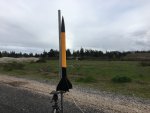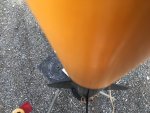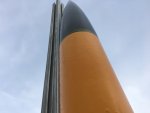- Joined
- Jul 4, 2008
- Messages
- 2,499
- Points
- 113
Superb! Definitely your best videos yet; great on board video camera views!
:gj:
Edit: It looks like those two launches at about the 2 min. mark nearly tipped the launch pad over!
That was an old pad (aerotech) and the pad was blasted into tiny pieces from the motor recoil. After this we built 2 re-enforced launchers. One with PVC and a 1/2" rail and the other with a 1" rail with a 60lb rated tripod. We did this so that we'd be able to use larger diameter rockets with 2x and 3x clusters.
I STRONGLY suggest NOT using a rod launcher with anything more than an E/F. The Aerotech launchers and hardware are crap to be honest and the slightest recoil causes the launch rods to whip badly.
I built my own launch box with a key switch, buzzer and arm and fire controls. A covered rocker switch is used to set of the engines.
The one rocket near the end of the film sounds like it went bang (@2:20)... It's ripping off the pad at over 1800Km/hr ( about/or slightly faster than your average .22LR) ~ M1.5. We figure the rocket travelled about 3.2Km ~9000ft altitude. Drift was ~400m and the rocket with some of the paint missing landed back inside the property line.
Last edited:









